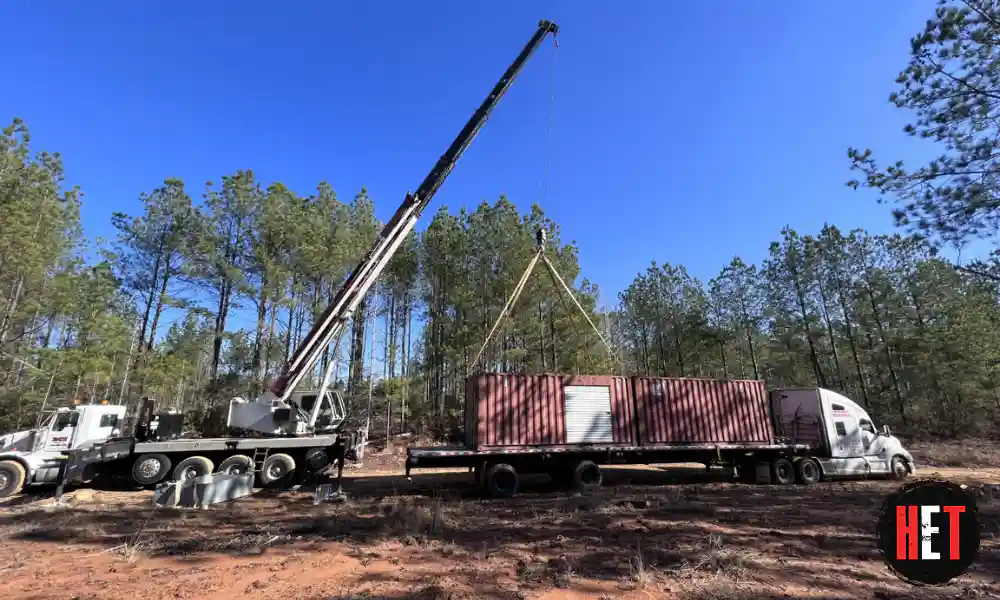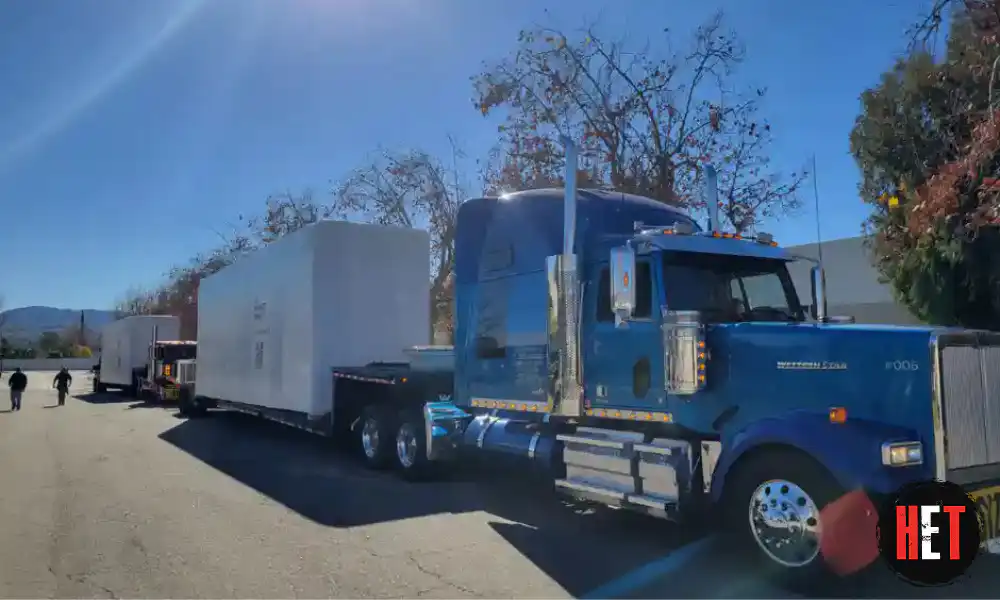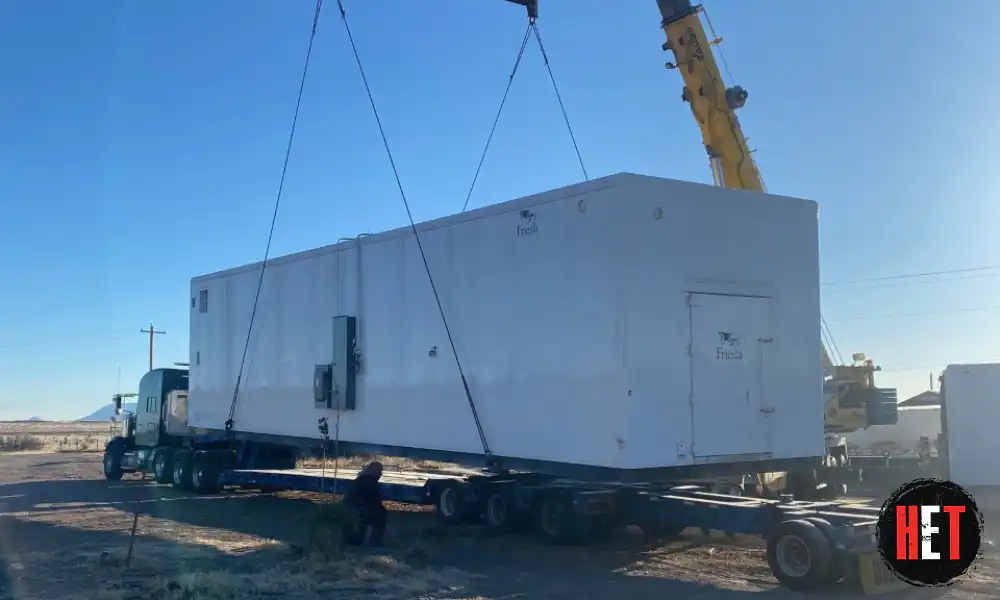UTILIZING SHIPPING CONTAINERS IN YOUR DISASTER RELIEF PLAN
Updated: October 01, 2025
When hurricanes, earthquakes, floods, or wildfires strike, every minute counts. Roads close. Power drops. Needs spike. Reliable logistics turn supplies into care on the ground. That’s where containers shine.
Shipping containers move on short notice, land wherever a truck can reach, and lock tight. They stack, they scale, and they shift roles as the mission changes. One unit becomes secure storage. Add a few, and you’ve got a clinic, a command post, and bunks for crews. Reefers hold the cold chain steady throughout outages. With a clear plan and the right partner, containers act like plug-in infrastructure that grows fast and keeps working as recovery moves forward.
- 1. The Role of Shipping Containers in Disaster Relief
- 2. Step-by-Step Guide to Using Containers in a Disaster Recovery Plan
- 3. Shipping Containers as Long-Term Disaster Recovery Solutions
- 4. Partnering With Heavy Equipment Transport for Container Moving in Your Disaster Relief Plan
- 5. Be Ready Before Disaster Strikes
Quick View
THE ROLE OF SHIPPING CONTAINERS IN DISASTER RELIEF
Shipping containers give you mobile, secure, and versatile assets that move fast during disaster relief. They arrive by truck or rail, drop where you need them, and lock tight. Steel walls handle rough weather and heavy handling. Stacking lets you build up when space is limited. In short, containers act like plug-in infrastructure for disaster assistance. They can support setups without building from scratch, such as:
- Storage
- Command
- Housing
- Clinical care
The next step is fitting these modules to your site and mission. When it comes to creating a disaster recovery plan, knowing shipping container dimensions helps you right-size each function. A 20-foot unit can stage medical kits or comms. A 40-foot high cube can serve as a supply cage with room to work. We map container transport to your incident command layout, so logistics, safety, and access all line up. As needs shift, the same boxes move forward with the response, then slide into recovery.
Beyond gear and supplies, your plan must support people and the cold chain. Containers also solve staff support. Converted units can house onsite relief workers with bunks, HVAC, showers, and workspace. Privacy improves rest and morale in long shifts. Stacking creates small compounds with lighting and controlled entry. For cold storage items, refrigerated containers keep food, vaccines, insulin, and infant formula within range. They run on shore power or generators and stabilize temperatures during grid outages. That steadiness reduces waste and keeps clinics supplied through the first hard days.
To round out your recovery plan, decide how containers work alongside other temporary assets. How do containers compare to tents or temporary warehouses? Tents and mobile storage units set up fast and cover big footprints. They’re great for surge. Containers add hard-sided security, weather resistance, and tighter pest control. They cut theft risk and protect sensitive goods when sites go dark. The tradeoff is simple. Containers need lifting gear and truck access, while tents don’t. Most plans use both. Tents for bulk flow, and containers for protected functions and high-value inventory.
In practice, containers make disaster recovery solutions more durable. They travel with you, survive rough conditions, and reset quickly. Done right, they become the backbone that helps your disaster recovery plan stay orderly, safe, and scalable.

STEP-BY-STEP GUIDE TO USING CONTAINERS IN A DISASTER RECOVERY PLAN
Use this disaster recovery plan template to coordinate your container disaster relief efforts.
1. ASSESS NEEDS
Start with a simple playbook.
- 1. Define what you must protect, who you must serve, and how fast supplies need to move.
- 2. Map the incident footprint, access routes, and safe zones.
- 3. Note power sources, fuel, and noise limits near neighborhoods and clinics.
-
4. Build a short bill of materials by function. Include things like:
- Medical supplies
- Water treatment
- Food
- Comms
- Power
- Shelter
- Staff support
- 5. Add projected volumes and turn rates.
- 6. Flag anything that must be secured or kept dry.
- 7. Sketch container placement with lanes for forklifts and foot traffic.
- 8. Plan lighting, signage, and perimeter control.
2. CHOOSE THE RIGHT CONTAINER
There are many types of containers, so match capacity to the job. A 20-foot unit fits tight sites. A 40-foot high cube adds height for racking and clear walkways. Dry containers cover most tasks, while double-door and side-open units speed picking.
Review common shipping container sizes to right-size storage, clinics, or command nodes. Check condition grades. Wind- and water-tight units protect goods. Cargo-worthy units handle heavier loads and frequent lifts.
3. BUDGET SMART
Price shapes the fleet. Compare rent versus buy based on duration and wear. New units cost more but need less repair. Used units reduce upfront spend and still perform for storage and office builds. Keep current on shipping container costs and find options that fit within your deployment window.
4. CONVERT WHEN NEEDED
For housing, add:
- Insulation
- HVAC
- Bunks
- Lockers
- Privacy doors
For command, add:
- Raised floors
- Cable pass-throughs
- Whiteboards
- Redundant power
For mobile clinics, plan:
- Clean and dirty zones
- Hand-wash stations
- Secure med storage
You'll also want to prewire outlets and lighting and fit ramps and ADA access as needed. Favor modular kits so the same box can pivot from response to recovery.
5. LINE UP A RELIABLE TRANSPORT PARTNER
Heavy Equipment Transport plugs into your incident command so container moves match your plan, not the other way around. We pre-plan routes, backup routes, and staging yards. We also confirm permits and escorts for oversize loads, then lock in crane or heavy forklift windows for set and stack. Real-time tracking and placement confirmation keep everyone aligned. Insurance, driver credentials, and chain-of-custody logs are on file, so sensitive cargo and high-value gear stay protected.

SHIPPING CONTAINERS AS LONG-TERM DISASTER RECOVERY SOLUTIONS
Converted containers don’t expire after the first wave of response. Once you’ve added doors, insulation, wiring, and HVAC, you’ve built durable assets that can rotate through missions. Interiors use modular panels, so you can swap layouts without tearing down. Because containers stack and move easily, you can redeploy them as needs change across a region. With basic additions like ramps, lighting, and access control, these spaces serve well for years.
Beyond immediate relief, containers help communities rebuild daily life in the following ways:
- Command modules can transition into city emergency hubs or school safety offices.
- Classroom builds support tutoring, job training, or childcare.
- Cold storage units backstop food banks and vaccination drives.
- Bunk units convert to transitional housing for utility crews, teachers, or families during long repairs.
- A clinic can become a neighborhood health room.
- A secure store can shift to tools and PPE.
Containers also support practical sustainability. Repurposing a steel box cuts new construction materials and site disturbance. Roof space can host solar with batteries to trim generator time and fuel burn. Add high R-value panels, LED lighting, and low-VOC finishes to lower load and improve indoor air. Simple upgrades like rainwater catchment and filtered refill stations reduce bottled water waste. When a site no longer needs the asset, you can lift it, relocate it, or resell it. At the end of life, the steel reenters the recycling stream.
PARTNERING WITH HEAVY EQUIPMENT TRANSPORT FOR CONTAINER MOVING IN YOUR DISASTER RELIEF PLAN
When your plan calls for fast, secure container moves, Heavy Equipment Transport steps in with a clear path from pickup to placement. Our team works with your incident command to slot deliveries by priority, line up staging, and keep updates moving as conditions shift. The goal is simple: Get the right boxes to the right spot, ready to work.
Our container moving services cover every phase. We coordinate port or rail release, arrange cranes or heavy forklifts, and set containers exactly where your layout calls for them. That includes reefers for cold chain, stacked compounds for secure storage, and converted units for housing or clinics. We handle permits and escorts when routes demand extra care. You get a single point of contact who knows your site and schedule.
We also prep before landfall or impact. That means pre-positioning empties, reserving lift gear, validating site access, and setting backup routes. During the surge, you get 24/7 dispatch, photo check-in and check-out, and chain-of-custody logs for sensitive cargo. We can stage generators, fuel service, and reefer setpoint monitoring to keep the cold chain steady if power drops.
Disasters don’t stop at the border, and neither do we. With transport to all 50 states, we push assets into coastal hurricane zones, fire corridors out West, flood plains in the Midwest, and mountain towns cut off by slides. We plan around restricted access, curfews, and changing road status, then adjust as your needs evolve from response to rebuild.
We do this work because communities need steady logistics when days are hard. If you’re building a container-based plan, bring us in early. We’ll help map routes, timelines, and lift needs so your containers arrive ready to serve.
BE READY BEFORE DISASTER STRIKES
Build your plan now with Heavy Equipment Transport. Containers give you mobile, secure space for storage, clinics, housing, and cold chain. Size them to the mission, convert with modular kits, and stage power, access, and placement so every unit goes to work on arrival. Pre-position empties, label lanes, and keep lift gear reserved so you can roll on short notice.
Reliable transport makes the difference between a good plan and a working site. We coordinate permits, escorts, and lifts, then place containers where your layout needs them. We can support route surveys, site diagrams, and chain-of-custody logs for sensitive cargo. Review our full list of transport services and contact our team to align scope, routes, and timelines.
Ready to move forward or need help finalizing the playbook? Call Heavy Equipment Transport at (888) 730-2951. We’ll handle the details so your containers arrive ready to serve, from first push through rebuild.


